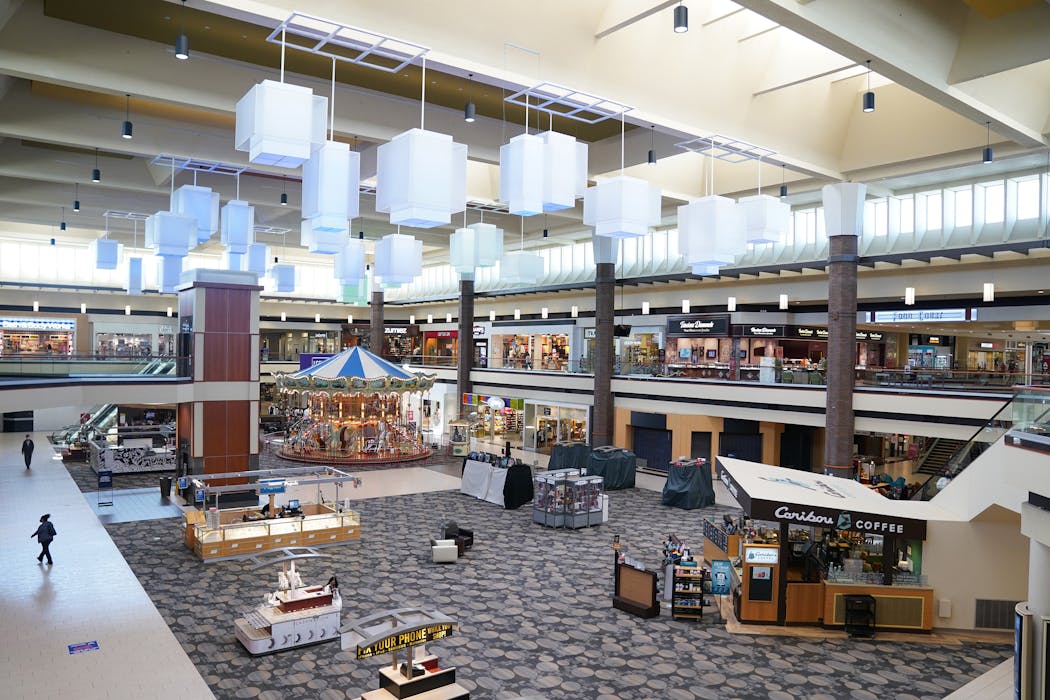Minnesota boasts some notable milestones in the construction of suburbs and their features, including the first enclosed shopping mall (Southdale, designed by Austrian-American theater artist and architect Victor Gruen), and the Mall of America, which is still the largest in the United States but is dwarfed on the world stage by shopping centers in Dubai and Canada.
But what happens when malls, erected as urban islands, lose their vitality? How can these structures, many built in the 20th century, be used to address the needs and challenges of the 21st century?
Those are some of the questions that animated architects June Williamson and Ellen Dunham-Jones as they set about writing "Case Studies in Retrofitting Suburbia." This 2021 volume builds on their breakthrough 2008 work "Retrofitting Suburbia."
If the first book was a "how-to" wake-up call about reinvigorating and repurposing built environments into walkable neighborhoods, as Surdna Foundation President Don Chen notes in a foreword, this latest work, subtitled "Urban Design Strategies for Urgent Challenges," goes deeper into the reasons for the whole project.
Williamson, who is chair of the architecture department at the Bernard and Anne Spitzer School of Architecture at New York's City College, and Dunham-Jones, a professor at the Georgia Institute of Technology, include 32 case studies, two of which are from Minnesota: the environmental improvements to the Maplewood Mall and the conversion of a dead Wayzata mall into a senior living center.
"The Twin Cities are a bellwether with these two projects that address environmental runoff and provide for an aging demographic," Williamson said last week from her office in New York.
"Case Studies" uses examples to address challenges in retrofitting the suburbs in six areas: disrupting automobile dependence, improving public health, supporting an aging population, "leveraging social capital for equity," "compete for jobs" and "add water and energy resilience."
Williamson visited Minnesota for the two prominent case studies. Before it was converted into the walkable, environmentally friendly mixed-use Promenade of Wayzata, the Wayzata Bay Shopping Center was notorious for its problems. Built over a creek, it flooded periodically and required a rowboat to get to crawlspaces. It also drained pollution into wetlands. Presbyterian Homes' 10-year project, which opened in 2017, included a boutique hotel, senior housing units, office space and a great lawn.
The development allows for people to age-in-place and not have to be housed far away from where they've lived their lives, Williamson said. The project also corrected for energy and water resilience. And because it's mixed-use, it's walkable, disrupting automobile dependence.
"Wayzata is an example of … not putting those older populations out far away but integrating them through retrofitting in places where they raised their families," Williamson said. "That's the kind of thing that could be replicated all across the country."
The major improvements in Maplewood are environmental. Through rain gardens and permeable paving, the retrofit turned 35 acres of asphalt into a drainage system whose tree trenches absorb two-thirds of the rainfall, which, in turn, reduced polluted runoff.
Williamson began looking at suburbs more than two decades ago, not because it was fashionable — it wasn't — but because of simple demographics. These places, which many mistakenly perceive as homogenous, are where most Americans live.
Williams gave a precis of the ideas and paradigms behind the suburbs in "Designing Suburban Futures: New Models From Build a Better Burb." Those foundational ideas include American pastoralism, a marriage of city and country, and an evangelical ethos of women being more moral than men and thus needing to be removed from the temptations and evils of the city.
The suburbs have become so deeply embedded that they have come to embody the American dream, even as they also have myriad social challenges.
The Twin Cities also register in one other area.
"Minneapolis is a leader with ADUs [accessory dwelling units], which have all sorts of benefits even though they're still oddly controversial because they cut across stereotype and nonsensical ideals like one home, one lot," Williamson said.
Rohan Preston • 612-673-4390

The 5 best things our food writers ate this week

A Minnesota field guide to snow shovels: Which one's best?

Summer Camp Guide: Find your best ones here

Lowertown St. Paul losing another restaurant as Dark Horse announces closing


